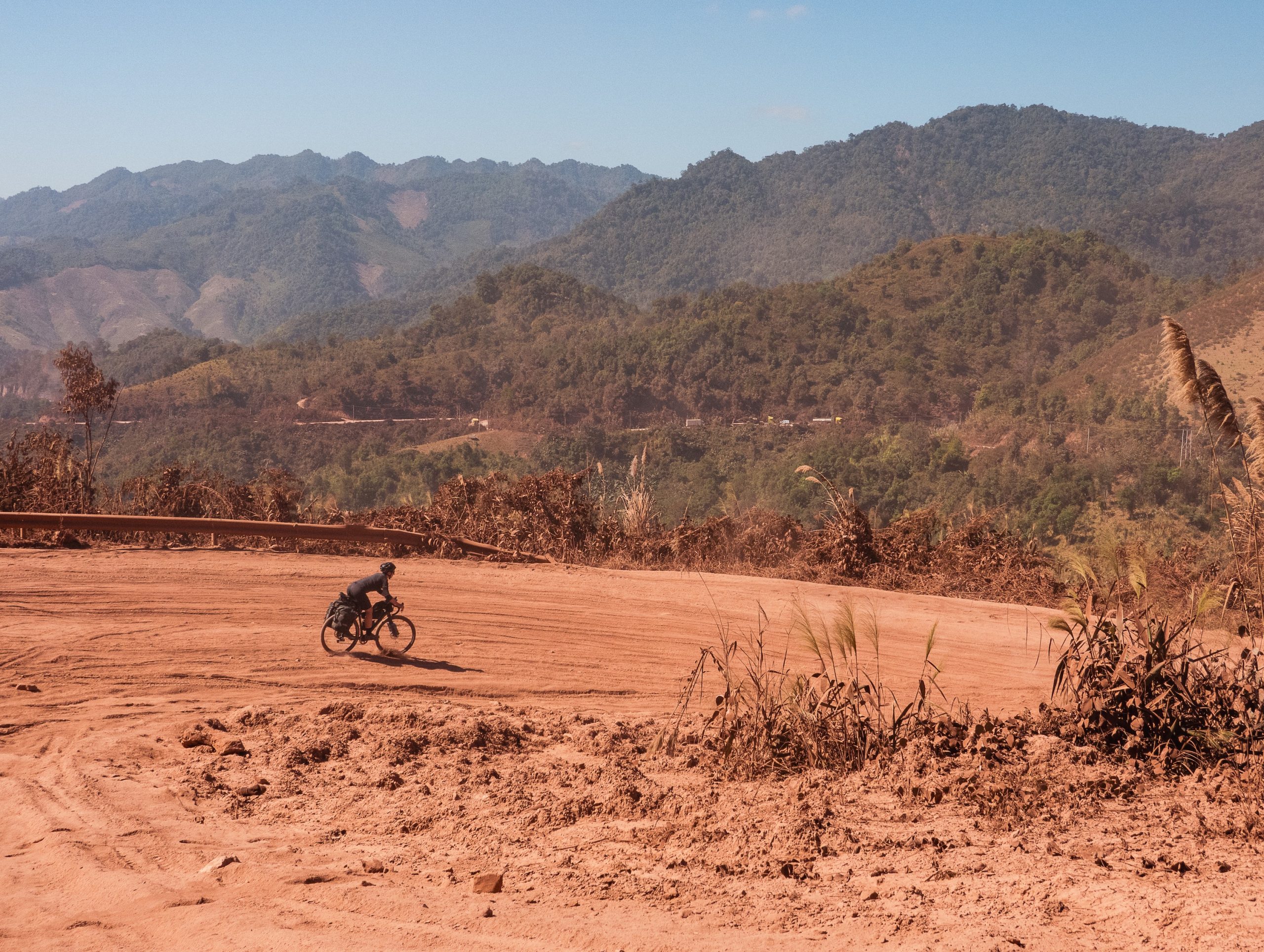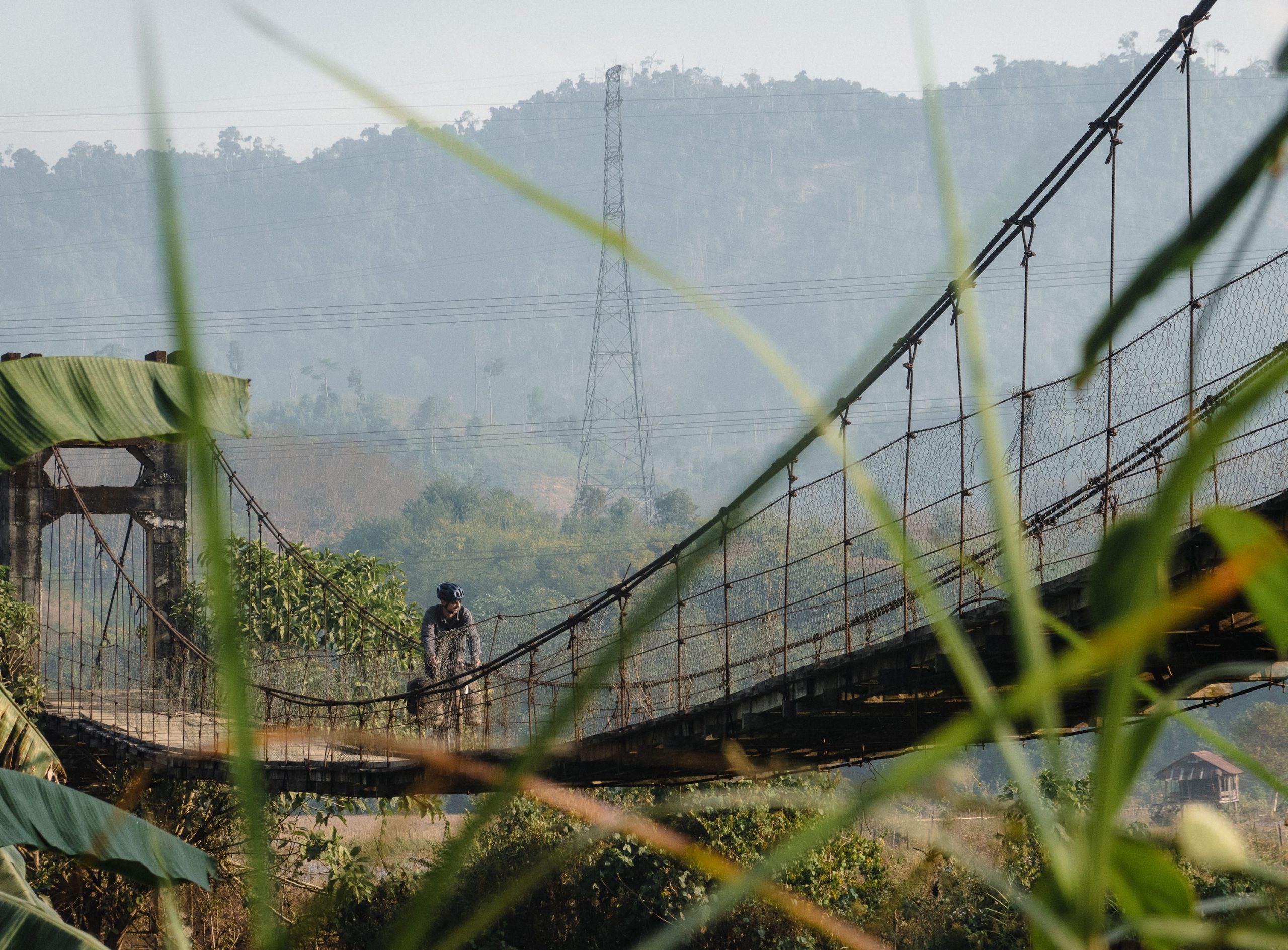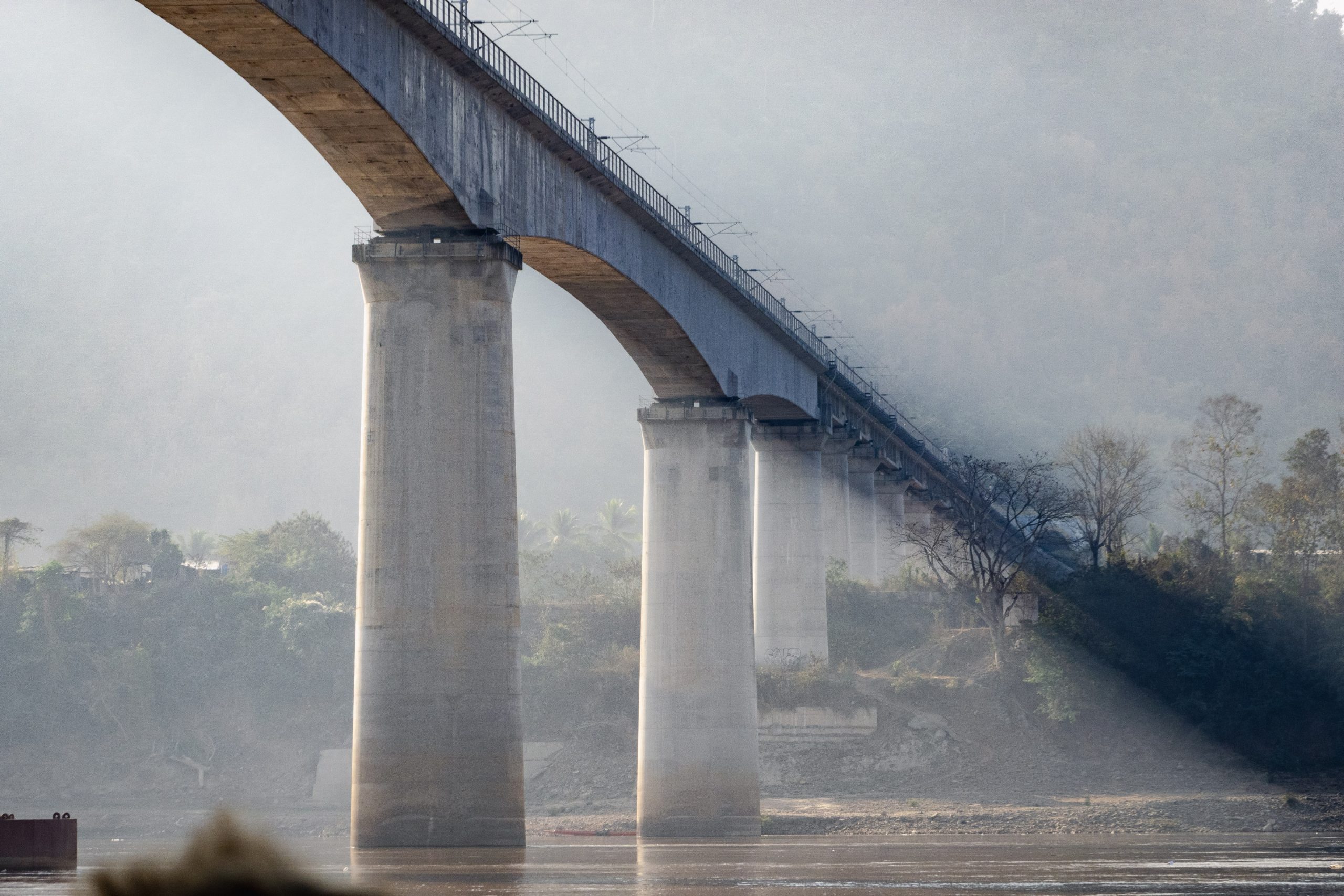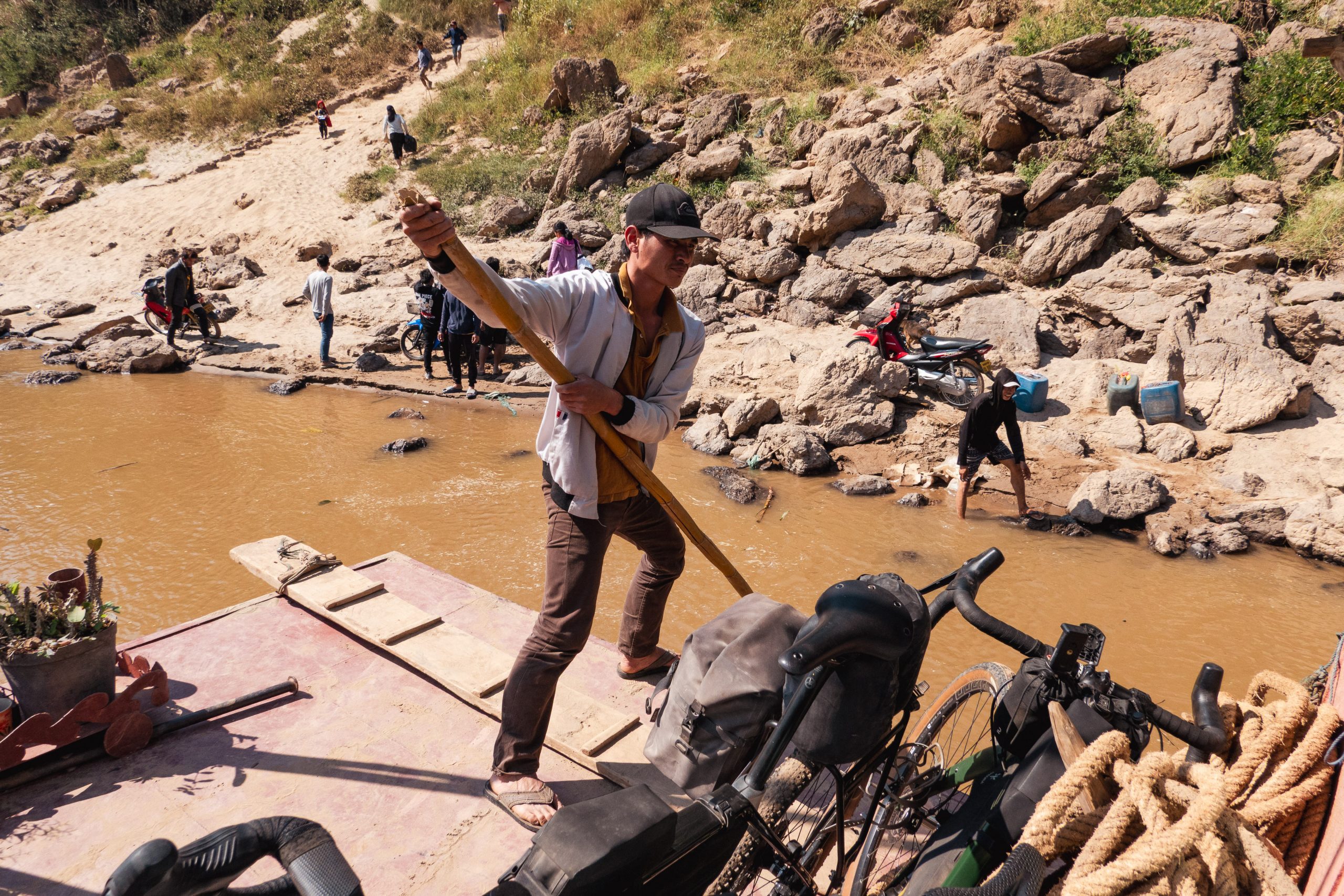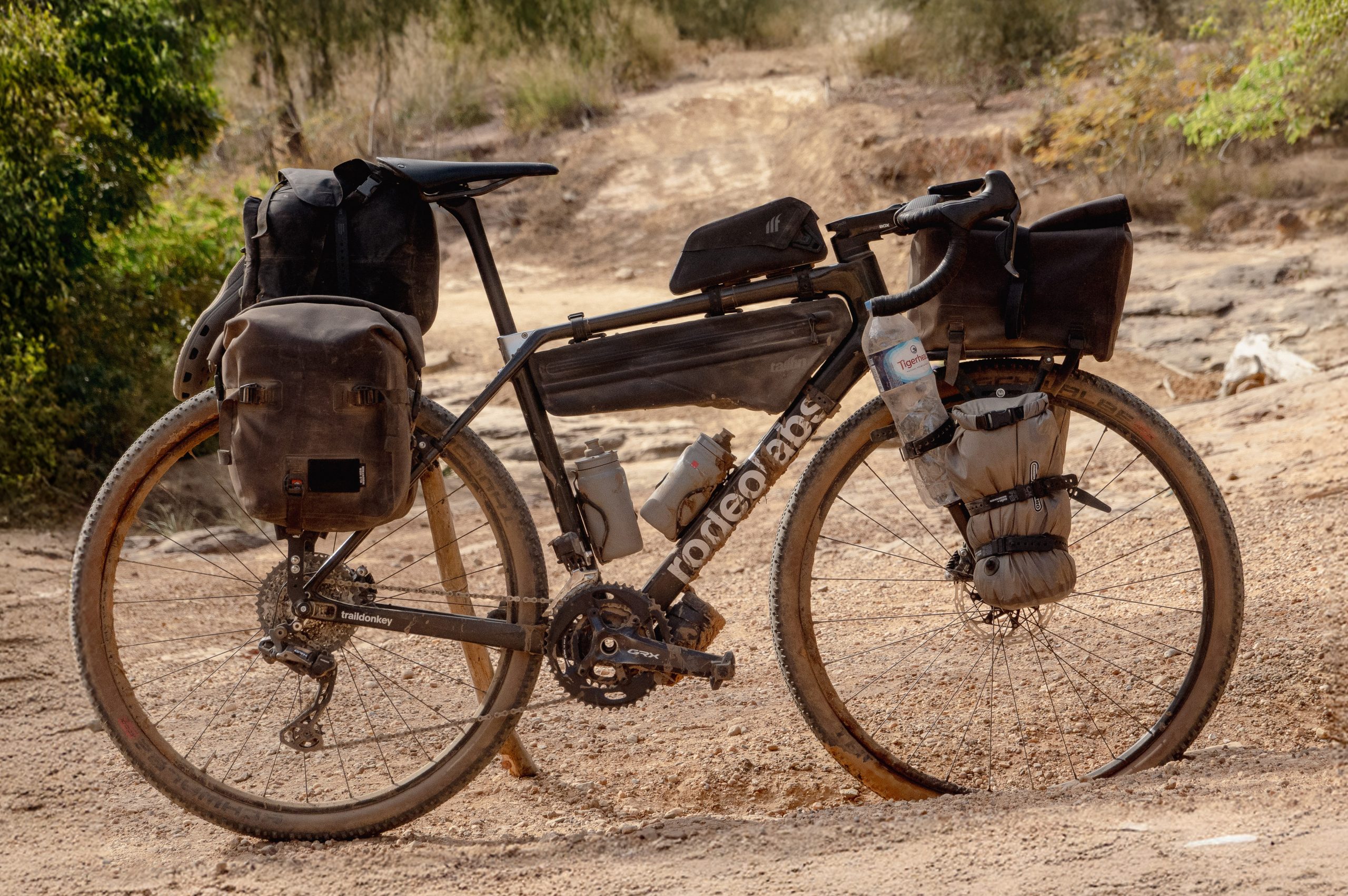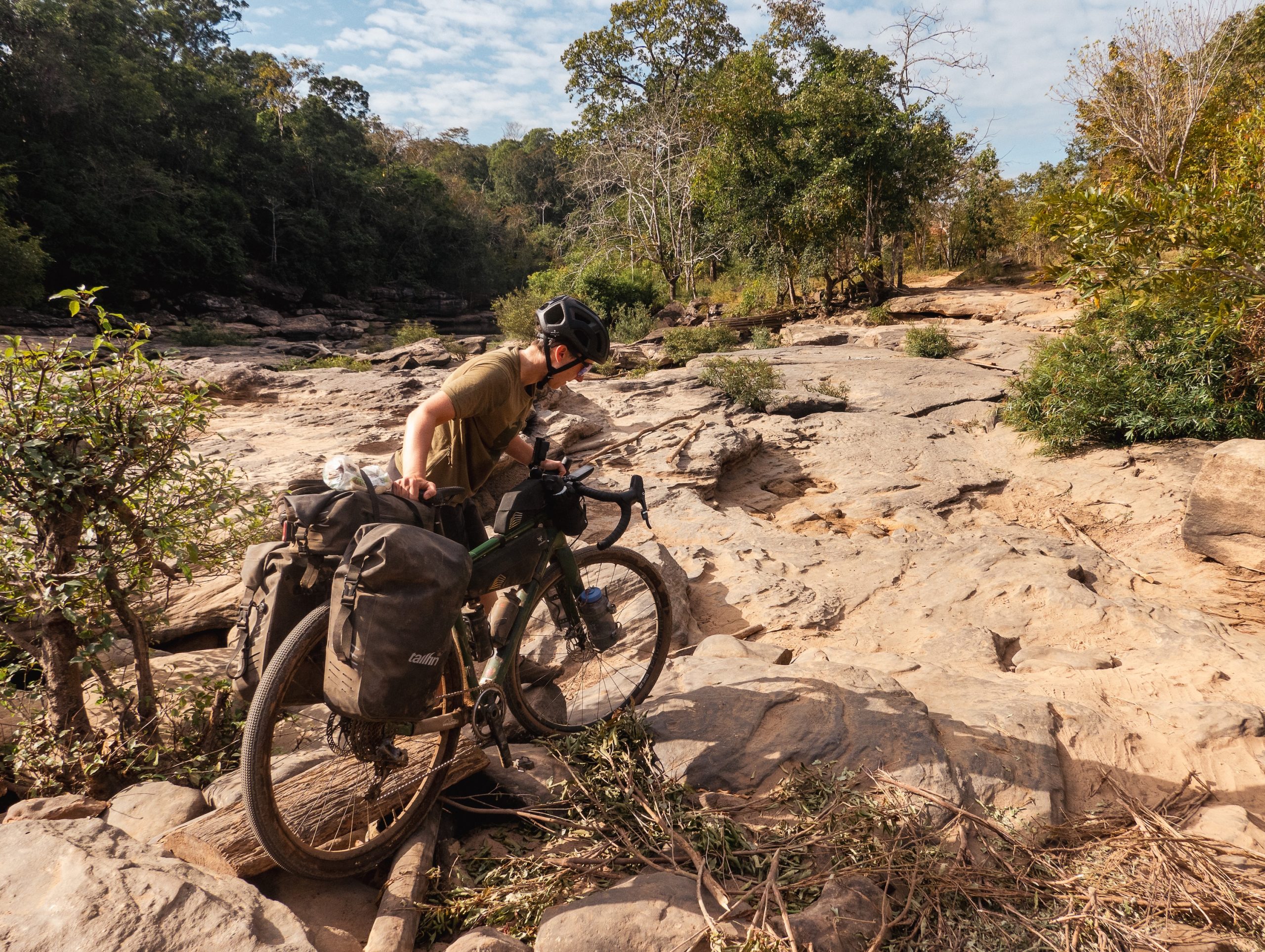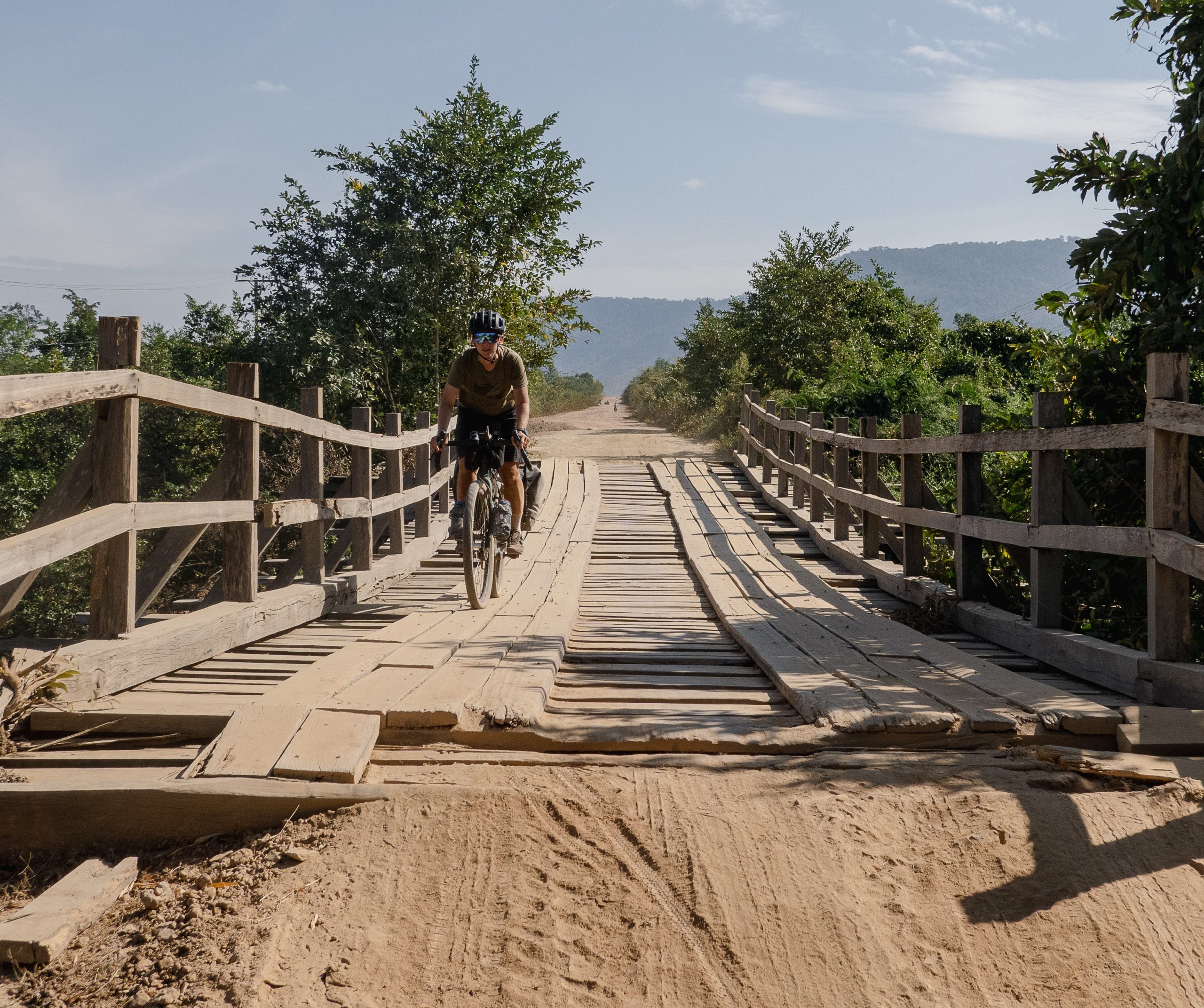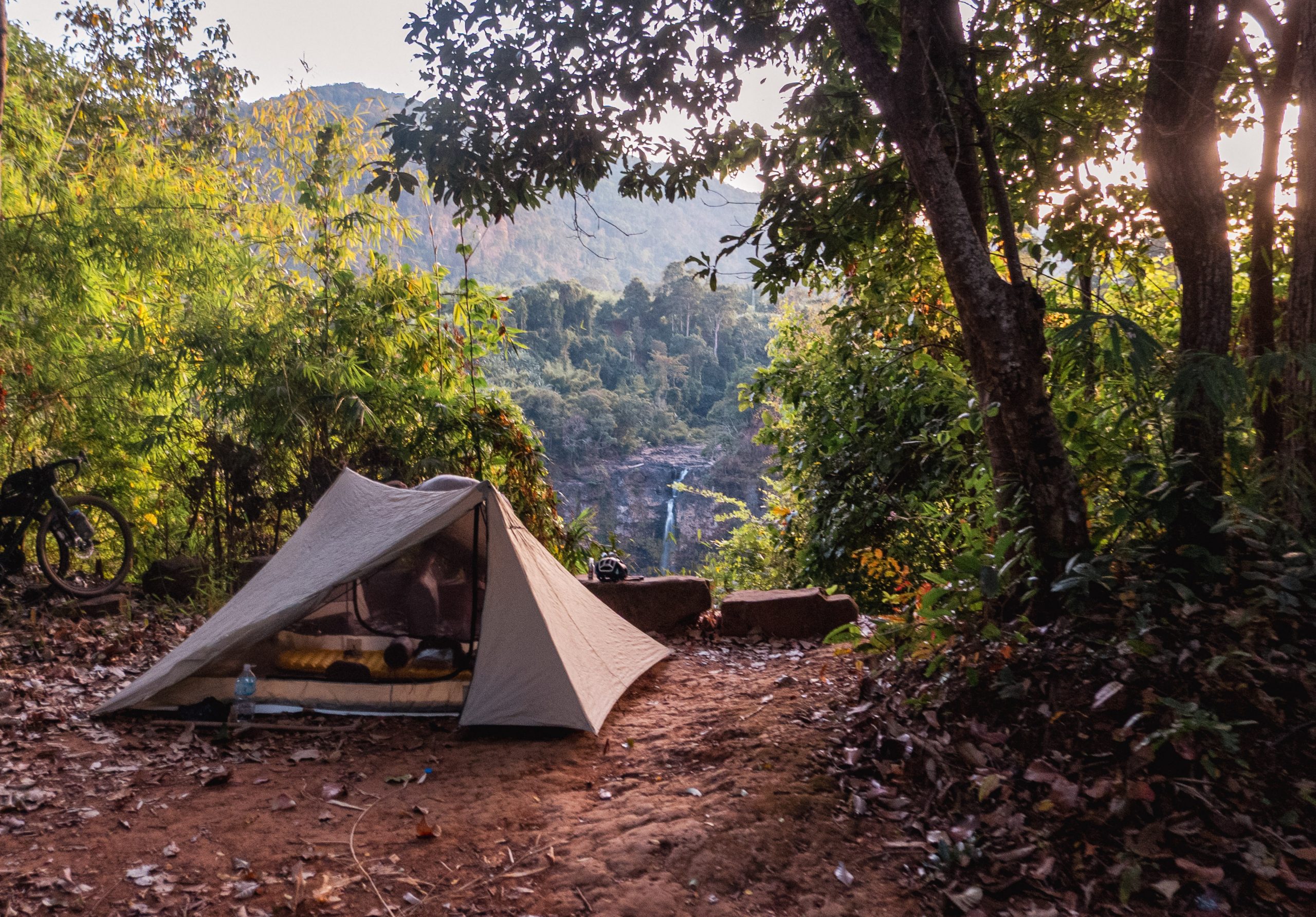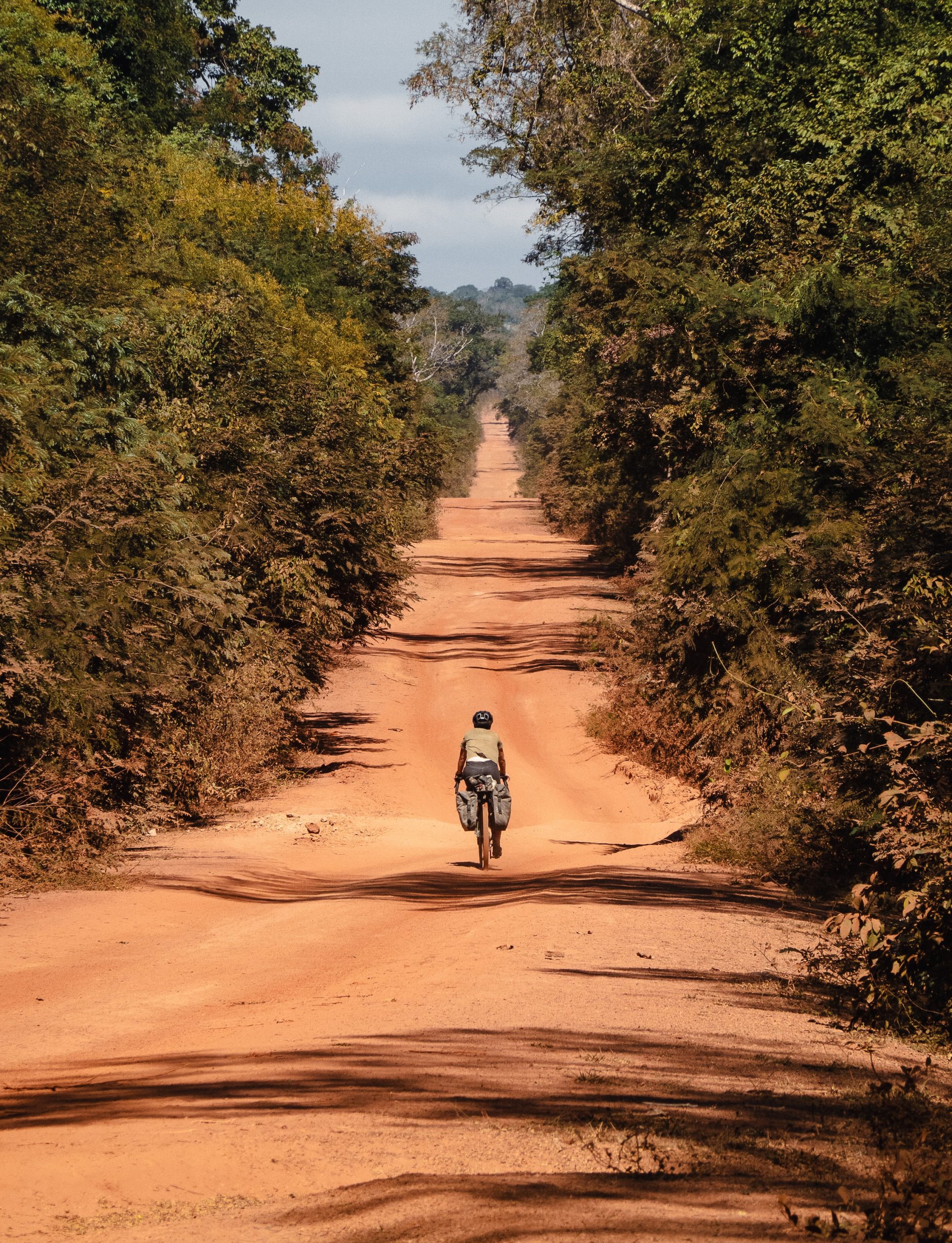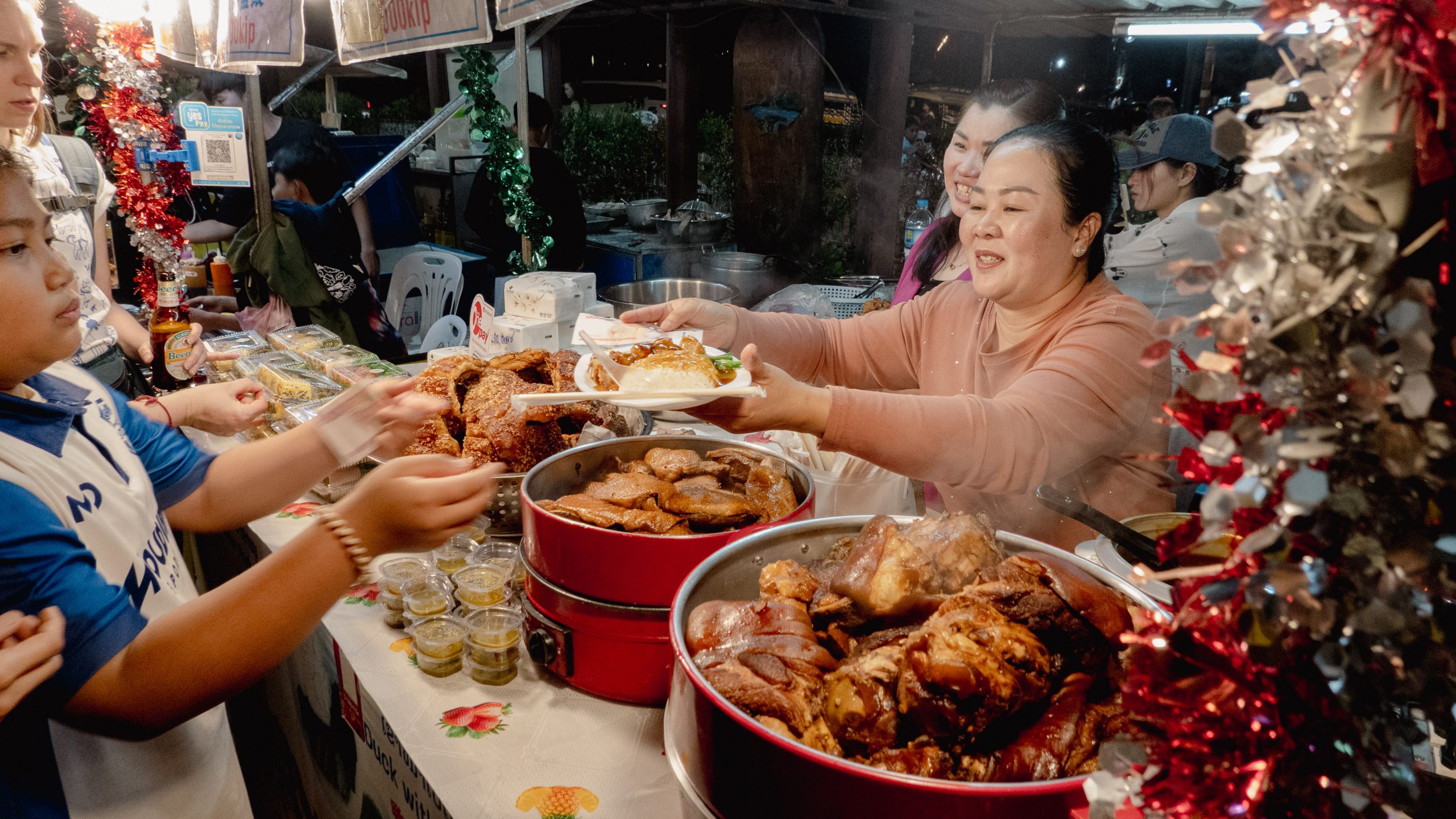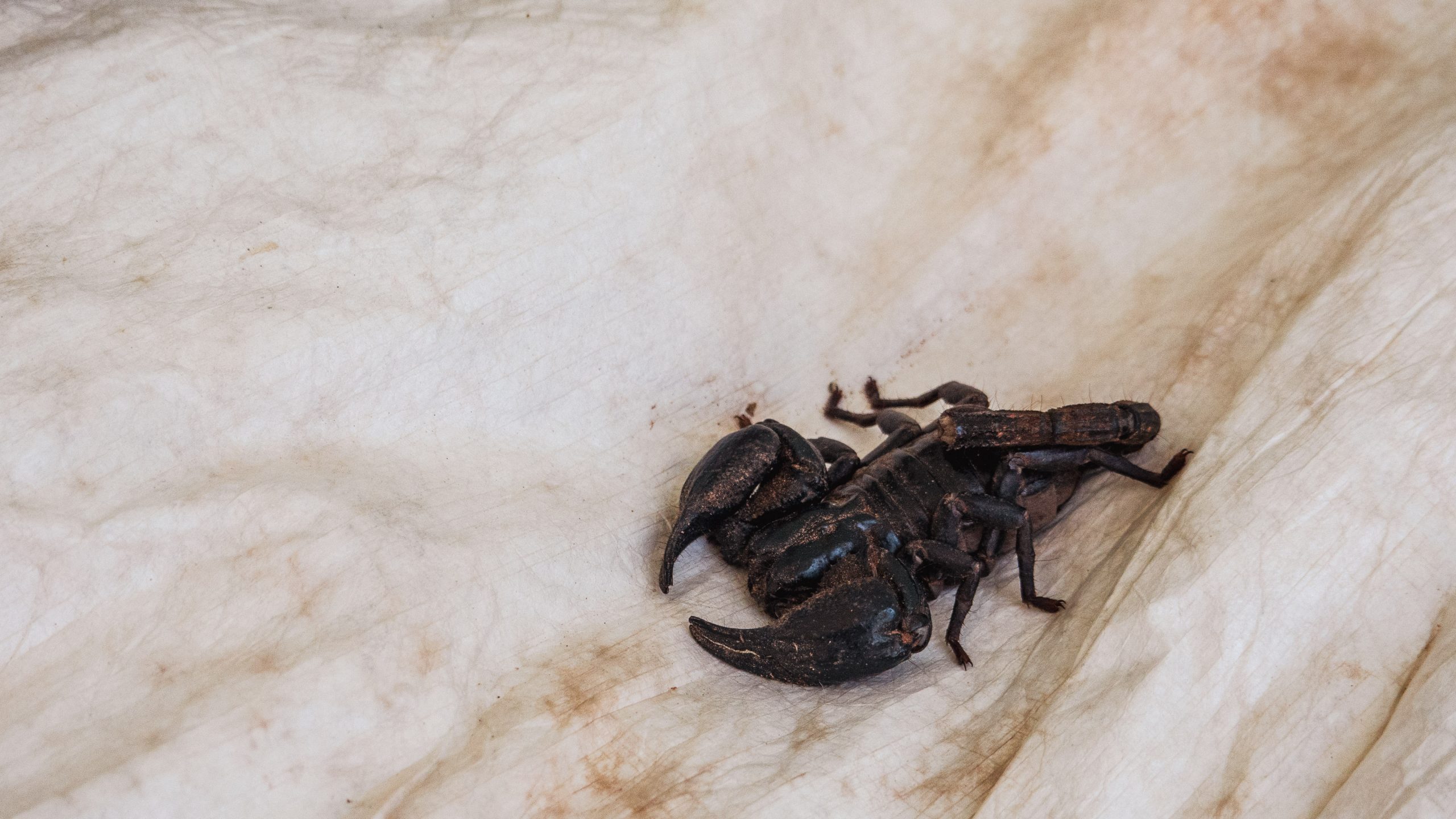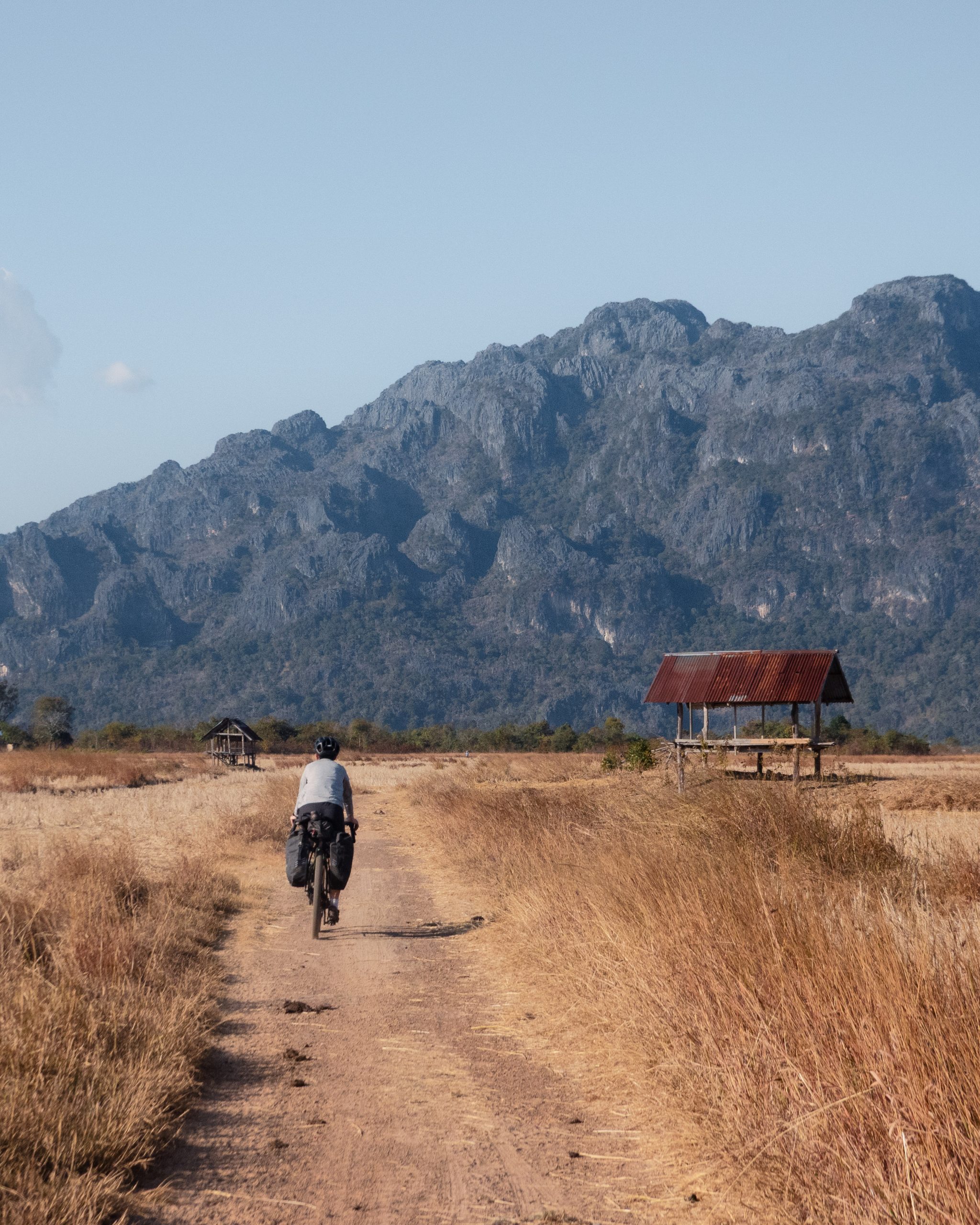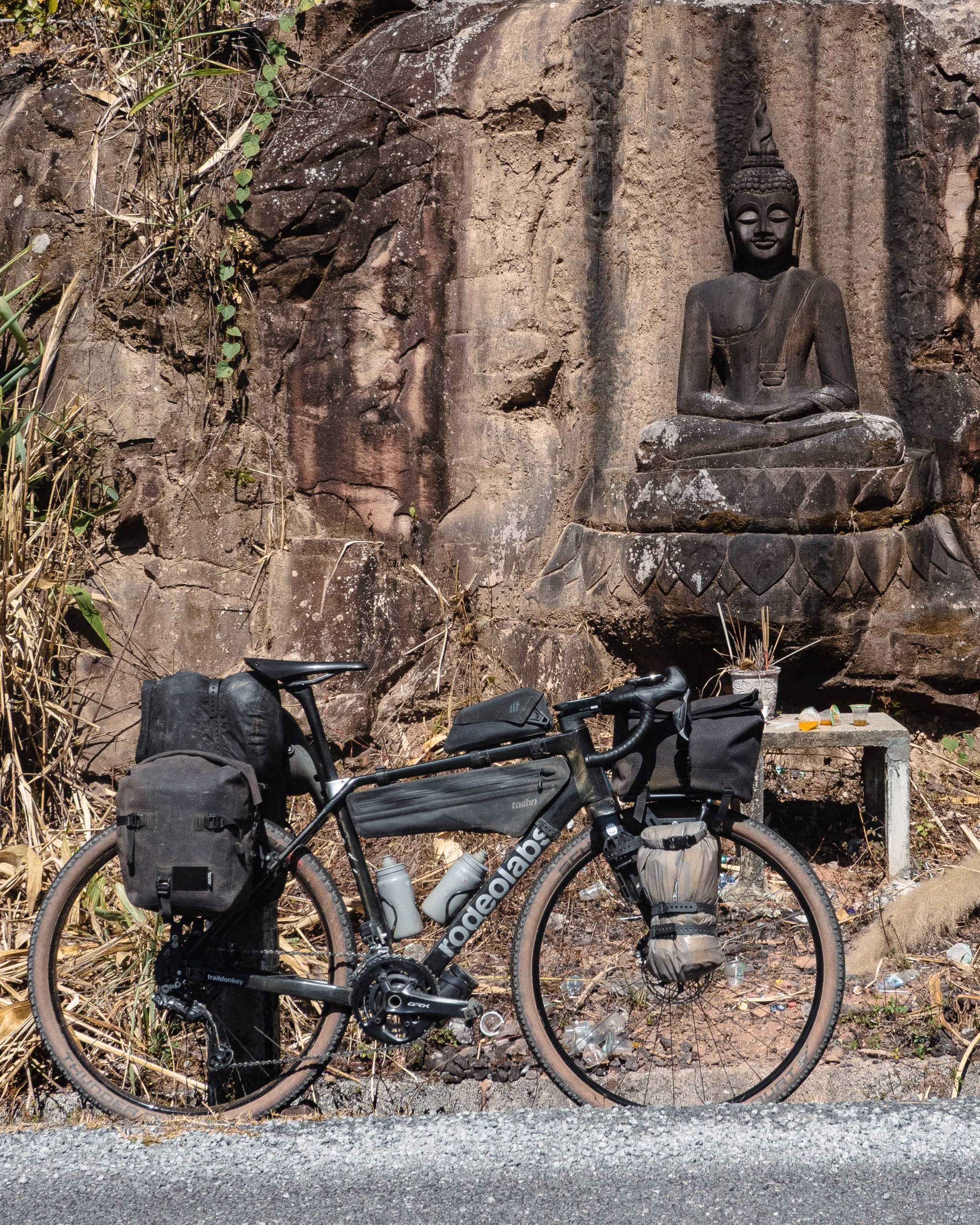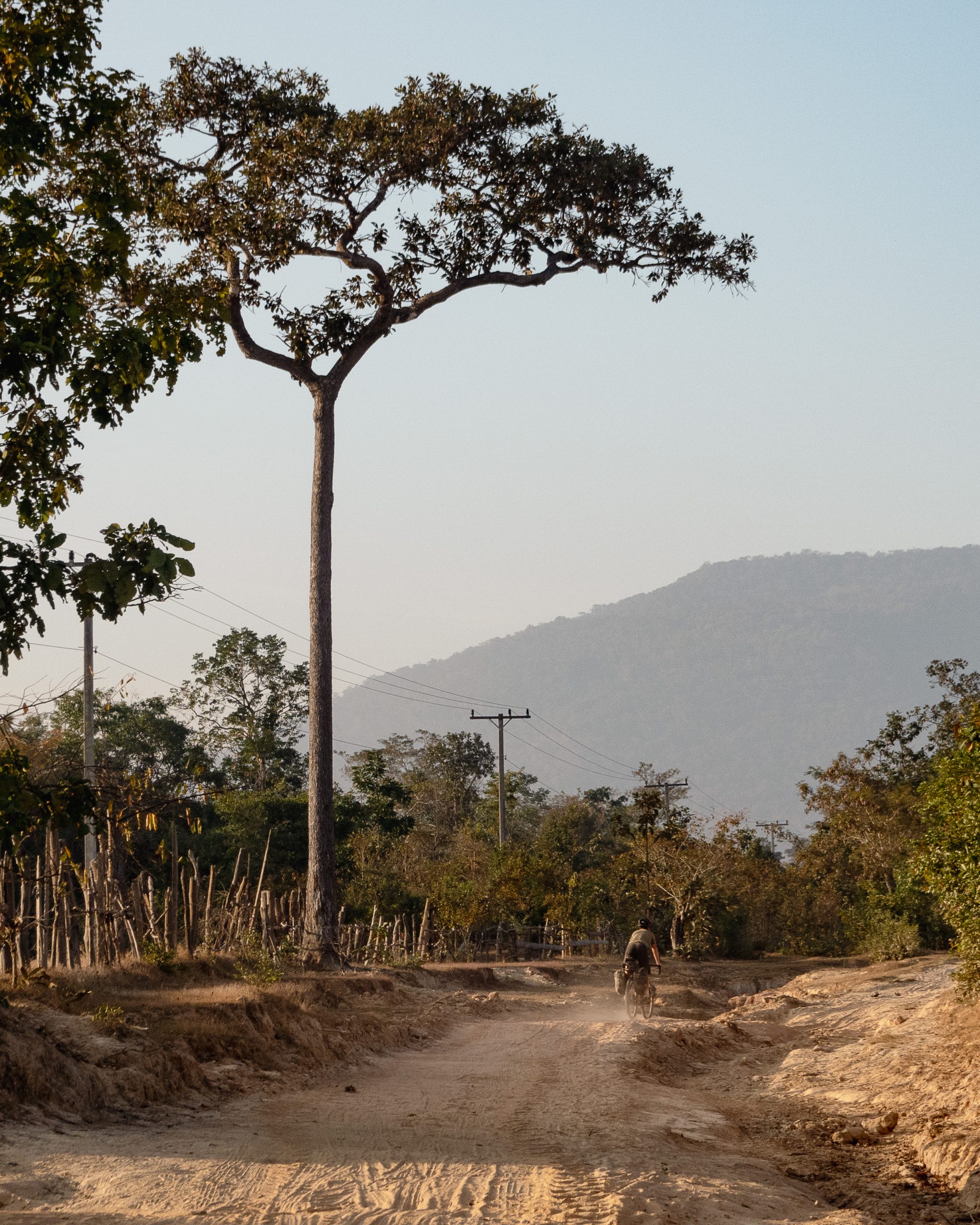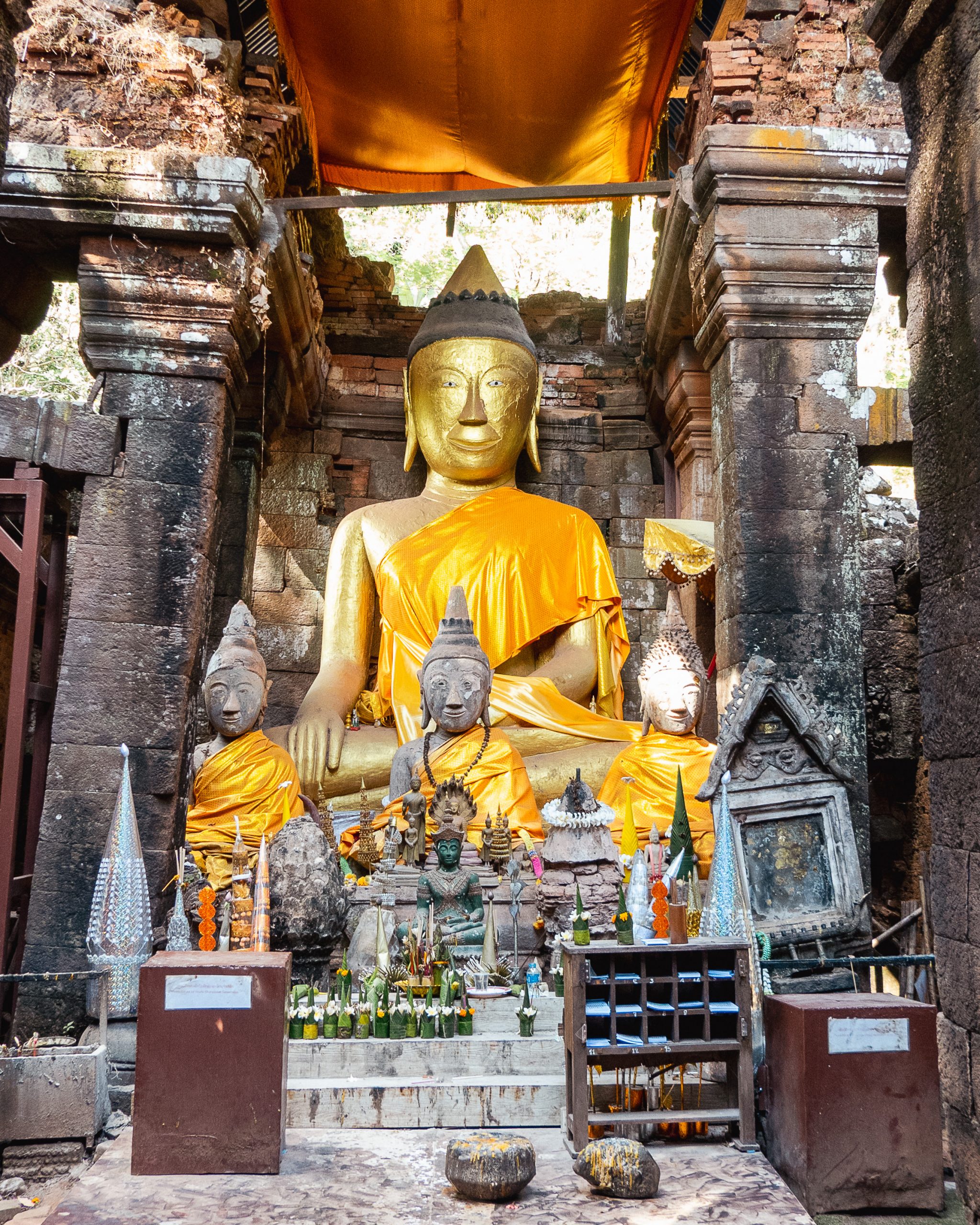Zdeněk and Iva, known as Furt Pryč (“Always Away”), are a Czech cycling couple and adventurers who love to pack their lives into bike bags and set off on long voyages. What began as a sheer idea during the coronavirus years, to try a bikepacking trip and see how far they could get from Europe toward Asia, eventually turned into a journey around the world. This is their story from yet another adventure through the Far East.
Two years after returning from our 16-month cycling trip around the world, we packed up our apartment again and hit the road. This time, though, we treated the adventure as an experiment: could we really combine long-distance cycling through Cambodia, Laos, and Thailand with remote work?
Don’t worry—this story isn’t about laptops or Wi-Fi. It’s about what we experienced in Laos, a country where we covered 1,700 kilometers and climbed 13,700 meters, and about which travelers rarely hear much beforehand. Even if they did, they probably wouldn’t believe it. Because in Laos, everything works differently. As a Belgian expat told us one evening: “I’ve lived here 15 years. You’d think I’d be used to it by now, but still, every single day, something surprises me.”
One thing we can say upfront: Laos is unlike anywhere else, and choosing it as a cycling destination was one of the best ideas we’ve ever had.
Christmas Eve at the border
“You can’t charge us for that, you have no right,” we tell the border officer firmly. We’ve already paid forty dollars for visas. He’s demanding another two for a stamp. A bribe, basically.
It’s December 24th, and we’re at Nong Nok Khiene, crossing from Cambodia into Laos. The officials refuse to return our passports until we pay. We have no leverage. And honestly, we don’t want to spend Christmas Eve fighting a losing battle. We give in sooner than we’d like.
“Welcome to Laos.” Not exactly the greeting we had hoped for. If this is what it’s like everywhere, we think grimly, we’re in for a rough ride.
We pedal toward the famous “4,000 Islands” in the Mekong. We’re heading for Don Som, where there’s a single guesthouse, no restaurants, and just a handful of other tourists. The narrow dirt tracks are riddled with potholes. It’s quiet, rustic, and—eventually—perfect. But first, we have to find the ferry across.
After an hour of wandering hungry and exhausted, having already ridden 90 kilometers that day, we’re desperate. Every local points in a different direction. Finally, by sheer luck, we run into the woman who runs the island guesthouse. She guides us back to where we’d started. Apparently, if we had just waited long enough, the boat would have shown up. That’s Laos: no timetables, no structure. The national motto could be “bon pen jan”—roughly, “It’s fine, it’ll work out.”
We finally cross the mighty Mekong and reach our host, a Dutchman named Sander who moved here twenty years ago, fell in love, married, and opened the island’s only lodging. He runs it brilliantly. We settle in for a Christmas of rest, reading, and reflection.
Into the highlands
After the holidays, we head north toward the Bolaven Plateau, about 300 kilometers away. Getting back to the mainland, however, is an ordeal: ferry–bridge–ferry, with endless confusion about where boats dock. The Mekong’s steep sandy banks are brutal. Locals push motorcycles and heavy loads up them as if it’s nothing. We can barely drag our bikes.
The ride across the plateau itself begins with a long, smooth 40-kilometer climb. At the top, we stopped at a tea factory. The tour guide speaks no English, and our gestures get us nowhere—a first in all the thirty countries we’ve cycled. Still, we taste the tea, admire the shrubs, and move on to coffee. There, we join two Europeans on a tour of a family farm. Our guide speaks fluent English and knows every detail about cultivating, harvesting, and roasting. It’s a highlight.
That evening, we raced the setting sun to reach a wild-camp spot near a waterfall. By the time we pitch the tent, the view takes our breath away: a flat clearing overlooking cascades, with silence so deep even the jungle seems muted. Two local boys show up to snap selfies and giggle at the size of our rear cassette. In Laos, people laugh constantly—sometimes with us, sometimes at us. The mood is always light.
The next day brings a glorious thirty-kilometer descent into Sekong, past tapioca fields smelling faintly of plum brandy. Locals wave enthusiastically. This is said to be one of the poorest regions of Southeast Asia, and it shows. Houses are little more than tilting shacks on stilts. Yet one boy on a rusted scooter rides up and hands us each a bottle of water, unprompted. Generosity amid hardship—that’s Laos in a nutshell.
The challenging Road 23
On New Year’s Day, we attempt Highway 23, a 200-kilometer “road” that used to be a part of the famous Ho Chi Minh trail. American bombers destroyed it during the Vietnam War and no one ever repaired it. Motorcyclists online debate whether it’s passable even with dirt bikes. For cyclists, it’s a gamble. We figured two days. We knew we’d regret it. But we couldn’t resist.
At first, it seems manageable: packed gravel, decent width. But soon, the surface disintegrates into brutal sandy climbs, rotting wooden bridges, and endless dust. Villages are plentiful, though, each one erupting in choruses of “sabai dee!” shouted by children. It’s like cycling as The Beatles on tour—except through choking clouds of orange dirt.
We camp rough the first night, half-hidden behind a fallen tree. Scorpions scuttle past as we wash off sand. The second day is worse: brooks to ford, mud to slog through, endless false turns. By midday, our average speed is ten kilometers per hour.
Eventually we stumble upon a village just before the Tad Hai river crossing. The ferry isn’t where maps claim. After much wandering through thickets, we spot a raft carrying a truck across. The boatmen demand an outrageous fee, but we’re too exhausted to argue. We pay and thank them silently for saving us from a long detour.
The final thirty-five kilometers into Phin nearly break us. Craters masquerade as road. When we finally find a restaurant, the cook seems baffled by our request for vegetarian food, but delivers fried rice with an egg on top. Perfect. We camp just beyond town, only to discover a large scorpion lurking between the tent layers in the morning. Thankfully, it’s sluggish.
Laos, again, keeps us on our toes.
Running on empty
By the time we ride into Savannakhet, I’m wrecked. Weeks of struggling with Cambodian cuisine—fried tarantulas, grilled snakes, fatty meats with skin and cartilage—left me undernourished. Road 23 was the final straw. I push through another 120 kilometers to Thakhek but feel hollow. We cancel camping plans and check into a hotel for three days so I can recover.
When it’s finally my turn to feel better, Zdeněk falls sick. A bad meal on the Thakhek Loop knocks him down: vomiting, fever, unable to eat. Yet ahead lie some of Laos’s toughest mountains. For days he rides on nothing but Pepsi, grimly pushing through 19% gradients. The nights are bitterly cold—sometimes 4°C. Locals huddle by fires, wrapped in blankets, bewildered when we tell them European winters drop below -10°C.
One climb takes us nearly two hours to cover 22 kilometers of relentless switchbacks. At the summit, Zdeněk is ghost-white, shaking, and barely upright. I take over the caretaker role. The roles are reversed, but the partnership holds.
Bombs and empty fields
As we move deeper into the north, the war’s shadow grows heavier. Near Phonsavan lies the Plain of Jars—ancient stone urns scattered across fields. Most sites are closed because the land is littered with unexploded ordnance (UXO). During the Vietnam War, U.S. bombers dropped more munitions on Laos than on Germany and Japan combined, of which a third never detonated. Decades later, farmers still risk their lives with every plow strike.
At the MAG (Mines Advisory Group) visitor center in Phonsavan, we learn the scale: 20,000 Laotians have been killed since the war ended, many of them children who mistook cluster bombs for toys. We knew about UXO before arriving, but the reality is staggering. Seeing MAG teams actively digging along the roadside hammers it home.
The road everyone warned us about
From Phonsavan to Luang Prabang is “only” 270 kilometers with 5,500 meters of climbing. Every local warns us: “don’t try it, the road is terrible.” One woman says her bus took eleven hours. We try anyway.
At first, asphalt. Then it disappears, replaced by fine choking dust, rocks, and crater-holes. Trucks crawl, raising orange clouds visible kilometers away. The road seems to vanish, reappear, then vanish again. For seven hours we grind forward, lungs coated in grit. The mountains around us are spectacular—jungle-green peaks stacked to the horizon—but beauty competes with misery.
Halfway, we find lodging in a guesthouse where even the blankets are moldy. Zdeněk shakes with fever all night. The next morning, the road gets worse. Two hours, 28 kilometers. Finally, a long downhill. We stop at a roadside shop for cold drinks and watch life unfold: a man weaving baskets, another fixing a motorcycle, a woman pounding spices in a mortar. In Laos, life is lived outdoors. Even bathing happens by the roadside. Everything, though, is covered in dust.
By the time we reach Luang Prabang, we’re broken—dust-coated, salt-stained, starving. We planned two nights, but stay a week. Even then, Zdeněk still hasn’t recovered.
The end of the ride
We make a decision: no more cycling in Laos. The capital, Vientiane, can wait for another trip. Instead, we board a slow boat heading upstream on the Mekong toward the Thai border. It will take two days. Two days to sit back, let the river carry us, and prepare for whatever comes next.
Laos has tested us more than almost any country we’ve ridden through. It demanded patience, resilience, and a sense of humor about things that never go as planned. But it also offered generosity, laughter, raw beauty, and reminders of both ancient history and modern scars.
As cyclists, we couldn’t have chosen better. Laos is maddening. Laos is magical. And there is truly only one Laos.



